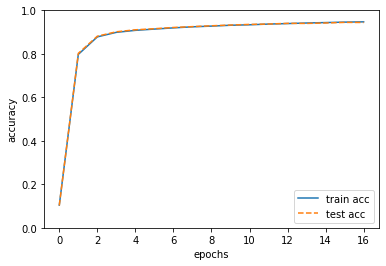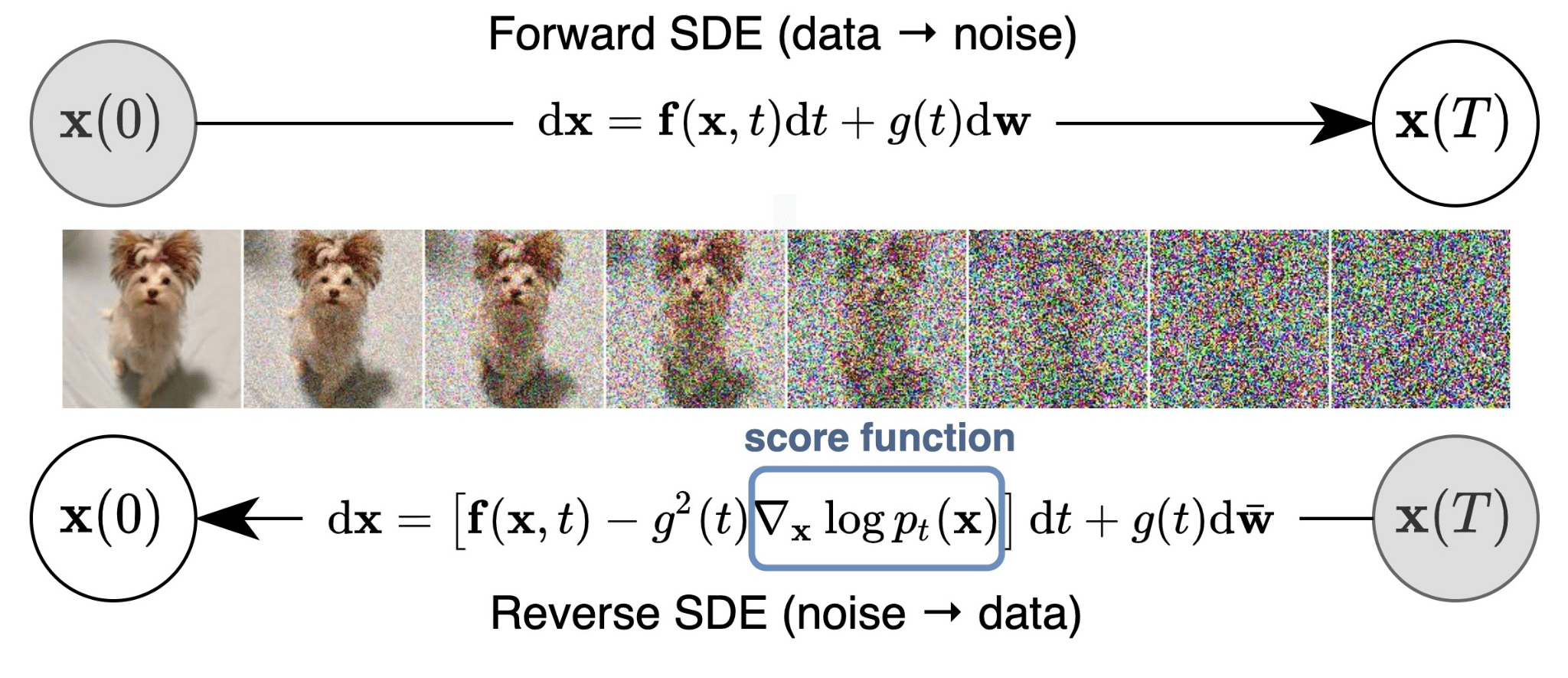1
2
3
4
5
6
7
8
9
10
11
12
13
14
15
16
17
18
19
20
21
22
23
24
25
26
27
28
29
30
31
32
33
34
35
36
37
38
39
40
| for i in range(iters_num):
batch_mask = np.random.choice(train_size, batch_size)
x_batch = x_train[batch_mask]
t_batch = t_train[batch_mask]
grad = network.gradient(x_batch, t_batch)
for key in ('W1', 'b1', 'W2', 'b2'):
network.params[key] -= learning_rate * grad[key]
loss = network.loss(x_batch, t_batch)
train_loss_list.append(loss)
if i % iter_per_epoch == 0:
train_acc = network.accuracy(x_train, t_train)
test_acc = network.accuracy(x_test, t_test)
train_acc_list.append(train_acc)
test_acc_list.append(test_acc)
print("train acc, test acc | " + str(train_acc) + ", " + str(test_acc))
train acc, test acc | 0.10441666666666667, 0.1028
train acc, test acc | 0.7974333333333333, 0.8023
train acc, test acc | 0.87805, 0.8812
train acc, test acc | 0.8989333333333334, 0.9015
train acc, test acc | 0.90805, 0.9106
train acc, test acc | 0.9139166666666667, 0.9156
train acc, test acc | 0.9194166666666667, 0.9213
train acc, test acc | 0.9242833333333333, 0.9252
train acc, test acc | 0.9275666666666667, 0.9291
train acc, test acc | 0.9314833333333333, 0.9324
train acc, test acc | 0.9336333333333333, 0.9354
train acc, test acc | 0.93695, 0.9371
train acc, test acc | 0.9392333333333334, 0.9403
train acc, test acc | 0.9419, 0.9399
train acc, test acc | 0.94385, 0.9419
train acc, test acc | 0.9459333333333333, 0.9447
train acc, test acc | 0.9472, 0.9443
|












